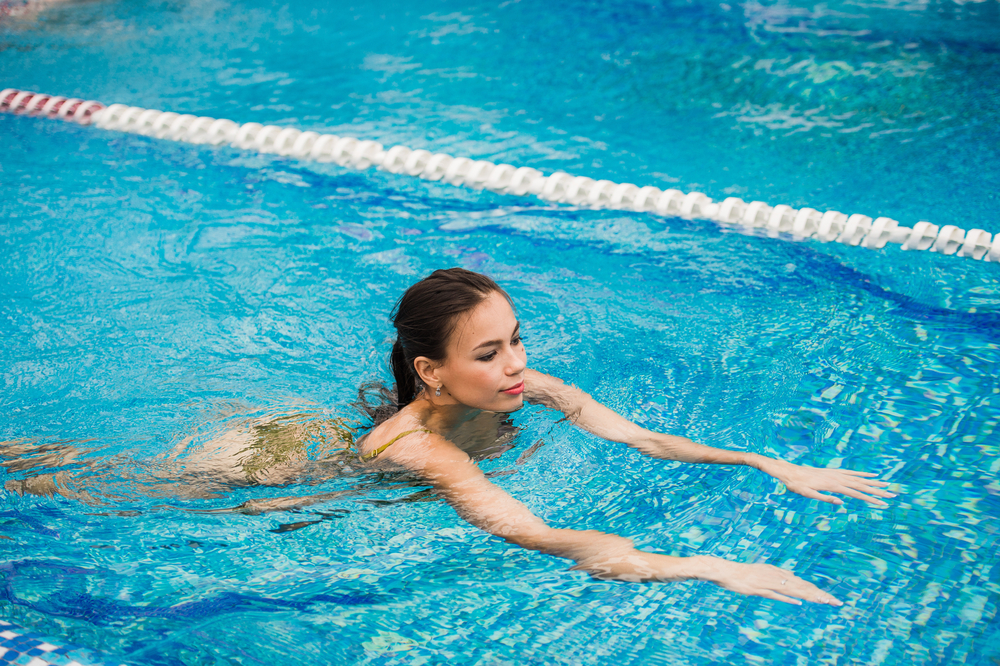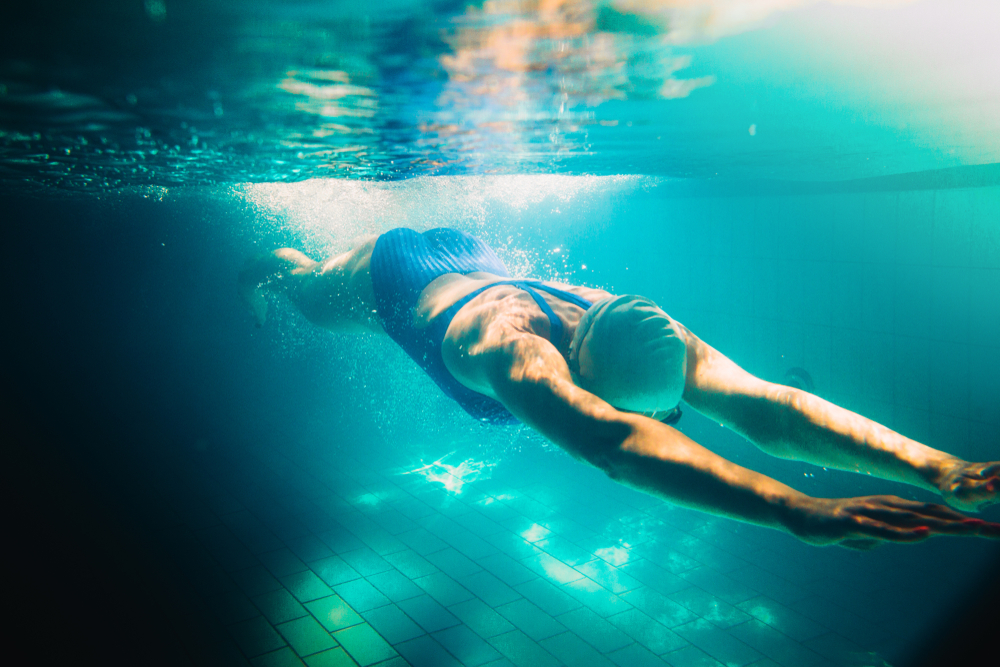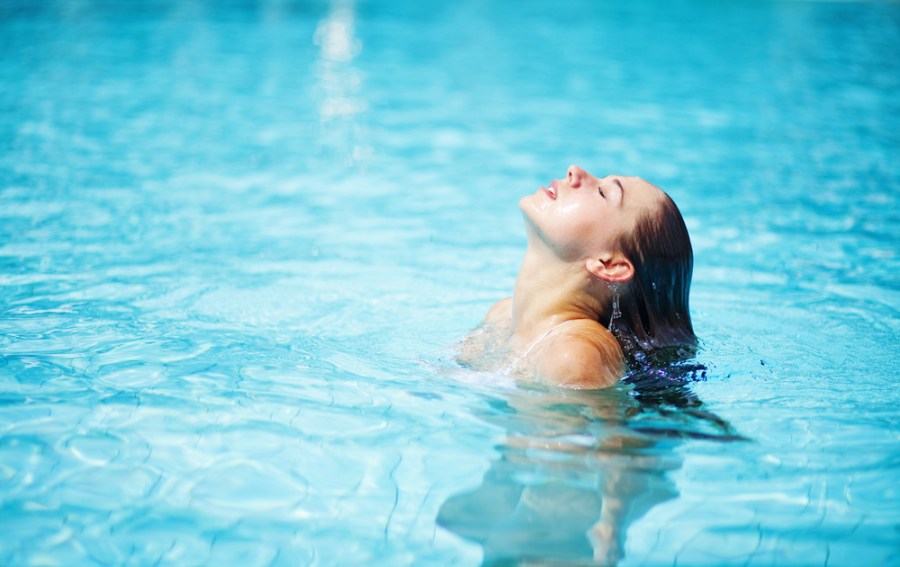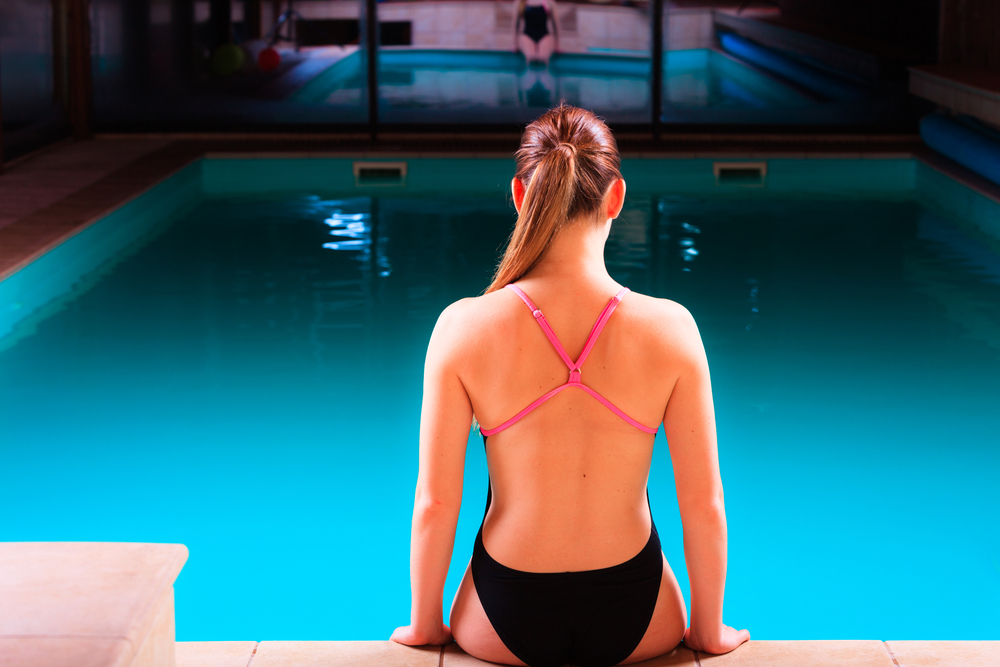If you want to get fully immersed in the moment, what could be better than mindful swimming? Improve your next pool session with these simple exercises.
We’ve heard a lot about mindfulness over the last few years, but achieving a mindful state can be easier said than done. What works for you? Do you favour online meditation, do you like to eat mindfully, or perhaps walk mindfully? If you’re still looking for your perfect practice, then perhaps mindful swimming is for you, after all, is there any better activity to get immersed in, than one where you’re actually submerged?
How can swimming improve mindfulness?
Mindfulness is about being in the present moment, calming and focussing your mind. And that’s why swimming can help.
‘To do this, you must mentally and physically “step away” from the distractions of daily life and stop the mind from ruminating on the past or projecting ahead into the future,’ says Alexandra Lees, a mindfulness expert and wellbeing coach, and the co-founder of Wu Wei Wisdom (wuweiwisdom.com). ‘The aim of mindfulness is to find an effortless and harmonious flow in life.’
The pool – or perhaps a river or lake if you can bear the cold in this weather – is the perfect place to find your flow.
‘Visiting a pool is a decisive act of self-care and self-imposed “me time”,’ says Alexandra. ‘It removes you from your normal environment and the demands and distractions of work, home and pervasive technology such as mobile phones.’
Calm your mind as you enter the pool
Simply choosing to go swimming can be a mindful act. More than walking, yoga or meditation, which can all be fitted into our normal lives, deciding to go for a swim is about truly changing our environment – the very medium through which we move. And the preparations that physical change requires can quickly become part of the process.
‘Mindfulness begins when you arrive at the swimming pool. The act of carefully undressing and packing your belongings into a locker signals to your mind that you are now putting aside the cares and worries of the day. This is a great mental preparation for your mindful swimming practice,’ says Alexandra.
Crossing the threshold into the water can be the worst part of a swim for those of us who are happier on dry land – but from a mindful perspective, it is an experience to savour. Pay attention to how the water feels as it laps against your body, as each part of you begins to be submerged.
If you are in a cosy indoor pool, feel the sensation of the warmth spreading through you and your muscles starting to relax. If you have braved the outdoors, focus on the revitalising feeling as the cool waters remind you what it feels like to be alive! Focus on the moment Once you are happily submerged in the water, being mindful becomes slightly easier.
‘Being in the water cuts out sensory distractions,’ says Alexandra. ‘The world seemingly slows down and you become more aware of your breath as it is amplified by the water. You are also physically held and supported by the water. It becomes easier to allow your body to relax and let go of any muscular tension. You are now literally in your flow!’

It is of course possible to be in the water and not be mindful, if you allow your mind to wander onto distractions or worries. So, once in the pool, you can enhance your mindful state by focusing your attention on three important qualities:
- The sensory environment of the pool. Focus on, for example, the sound, colour and temperature of the water.
- Your body and its connection to the water. How does the water feel on your body? Where in your body are you still holding onto tension? Can you allow the water to support you even more?
- The rhythm of your breath. Observe the pace of your breath. Are you breathing too quickly or too high in your chest? Can you slow your breath and bring it deeper into your body?
Swimming exercises to try
Being more mindful in the water has a multitude of physical benefits, whether you are the most casual lane swimmer who simply enjoys a dip to get a break from the usual routine or the most keen athlete looking to boost their performance.
‘If you are mindful and present when swimming, this helps you identify, release and relax any areas of physical tension in your body,’ says Alexandra. ‘It will heighten your awareness of the movement of your body and its relationship with the water. Your swimming technique and performance will improve and, as a result, you’ll also build muscle strength and feel more energised afterwards.’ You will also feel mental benefits from improving your focus.

‘Mindful swimming also helps you practise mental self-discipline and focus, and teaches the importance of the breath. It can help you press the “pause” button on any negative self-talk and gives you the mental space to step away from your daily routine.’
The following exercises have been created by Alexandra to help you focus your attention in the present moment and tune in to your body, breath and environment when swimming:
- Become ‘at one’ with the water as you swim, by tuning into how your body and the water interact. Be acutely aware of the temperature of the water. Now notice how different areas of your body feel. Which parts are resisting the water and which are relaxed? Find the areas of your body where you are holding onto unnecessary tension that could be surrendered to the support of the water. Observe how small changes in your movements affect the resistance and pull of the water.
- This exercise will help train your mind to stay in the present moment rather than racing ahead or thinking of the past. Find a single point of focus at the other end of the pool. Hold your attention on this point as you swim towards it, either visually or in your ‘mind’s eye’. Try not to think about the next length, or how many more there are to go. If your mind does wander, compassionately but firmly bring your attention back onto the ‘one point’. With practise, this exercise becomes easier and builds positive mental self-discipline.
- Once in the water, become aware of your breath. Lie with your ears submerged and listen. Then notice how your breath changes as you swim. Follow the movement and rhythm of your breath as it enters and leaves your body. Notice how your breath and body interrelate and co-operate. Draw each breath deeper into your body, right down to your diaphragm. Make the breath longer and smoother and mindfully synchronise it with your swimming movements.








